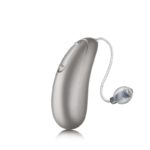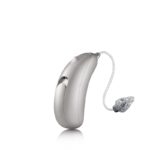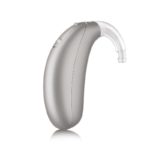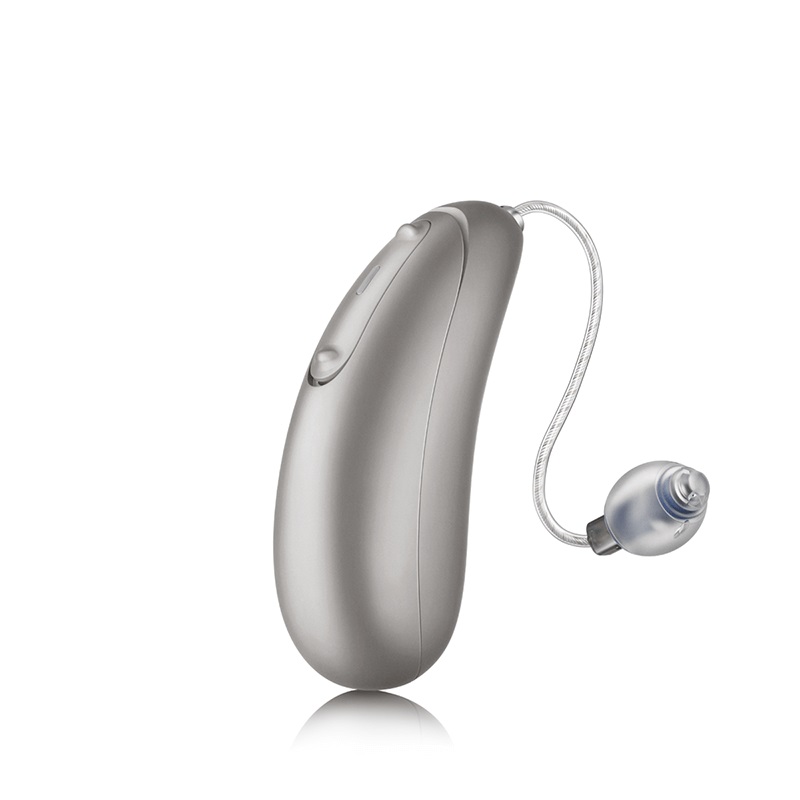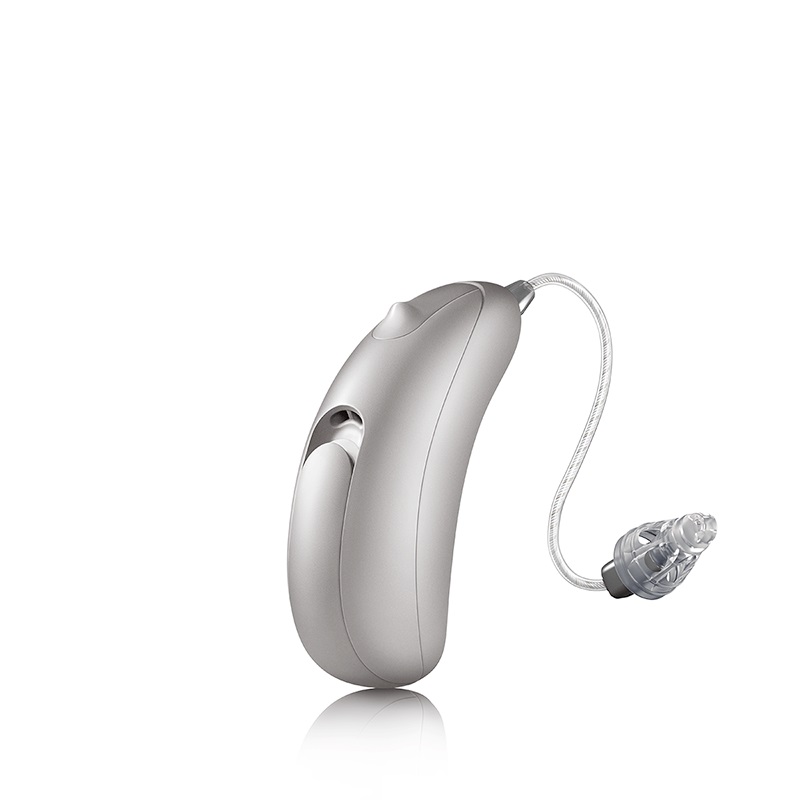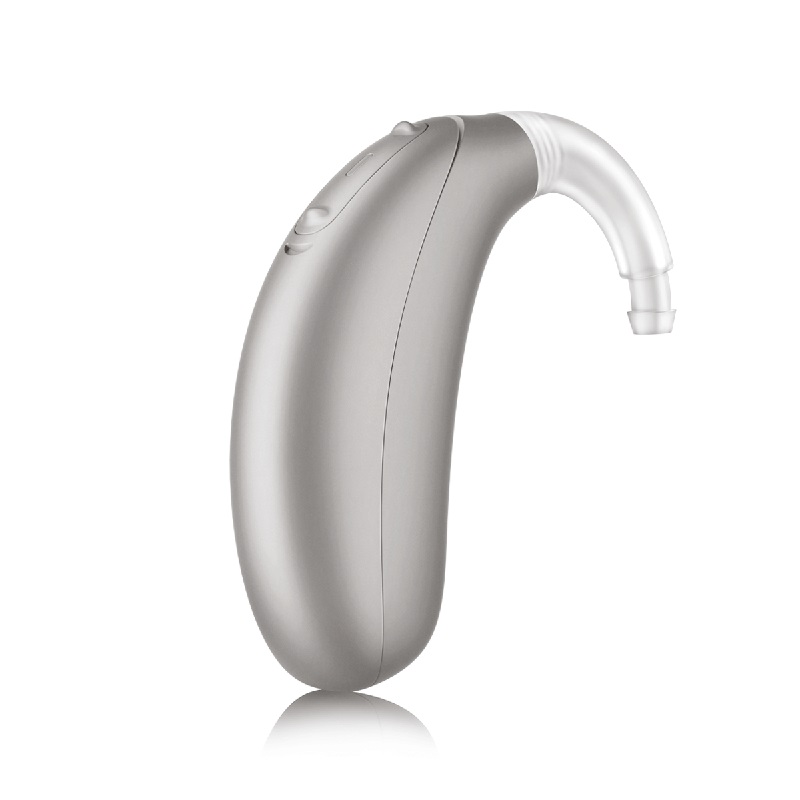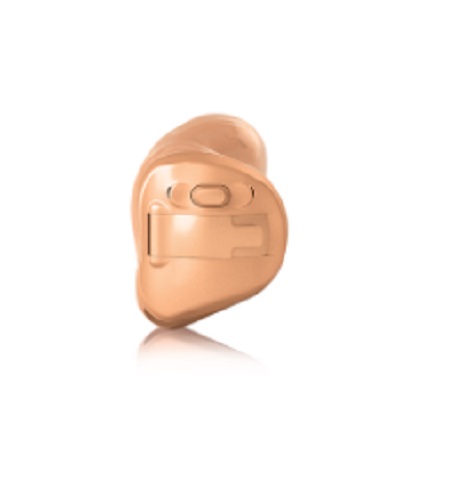Unitron has a strong reputation in the hearing aid business for creating aids that can help people with significant hearing loss.
The company designs hearing aids in three configurations - behind-the-ear (BTE), in-the-ear (ITE), and receiver-in-canal (RIC), and almost 20 designs across the configurations. It’s got over five decades in the business, more than 28 locations worldwide, and a distribution network that serves people with hearing issues in over 80 countries.
The company’s brand signature is not so much a hearing aid design as a customer experience, known as FLEX, that helps put the customer in the driving seat right from the start of their consultation and throughout their hearing aid ownership.
You see an audiologist, and then test out a trial Unitron hearing aid, risk-free, in your day-to-day life for two weeks before you commit to buying anything.
Unitron’s Brand Leaders
As you’d expect of a company with fifty years of history, Unitron has several product lines that take its brand forward. While we don’t propose to numb your brain with a comprehensive run through the almost 20 models the company makes, a quick tour through some of those brand leaders might give you enough of an idea of Unitron’s core values to let you decide whether or not it’s a company you need to give your money to.
OUR TOP PICK
The Moxi Jump R T is a prime example of Unitron’s RIC hearing aids. With volume and settings adjustable at the push of a button, it’s both rechargeable and comes with the potential to work with a TV unit that streams the sound of the TV directly to the aid, so you don’t have to keep upping the volume and blasting the neighbors anymore.
It also comes with a telecoil that lets you boost the sound you hear from a whole range of situations, including conversation in crowded rooms, elevating directed speech above the general noise floor.
With both an overnight and a power pack charger available, you can make sure your hearing aid never dies on you at awkward moments. It will also help make those “WHAT?” moments on the cellphone a thing of the past, because it can auto-stream your phone sound feed into the hearing aid – so you can talk hands-free, and with a much-improved clarity, whether you have an Android or an Apple phone.
If you want to change the settings on your Moxi Jump R T, you can also do it quickly through the phone app that connects to the device, so you don’t have to fumble for old-fashioned controls.
It’s available in 10 colours – because, after all, why not? – and comes with a 3-year warranty as standard. Plus, using the Unitron FLEX program, you can get a significant discount when trading in your Moxi Jump R T for its newer version three years down the line.
That makes for a hearing aid that follows a more or less cellphone pricing model, where upgrades for loyal customers are significantly cheaper than new purchases.
If you’re looking for negatives of course, the first Moxi Jump R T hearing aids you buy will potentially leave a ringing in your ears from pure sticker shock.
And it’s always worth remembering that you can’t go direct and buy these hearing aids as a consumer, but you have to go through an audiologist, as – like most hearing aids other than glorified ear trumpets – they have to take account of your particular level and type of hearing loss.
But overall, the Moxi Jump R T is a hearing aid with more benefits than detraction-points, and both the double option for charging, the TV unit, and the hands-free cellphone conversation element make it a hearing aid to seriously consider, despite the hefty initial layout.
EDITORS CHOICE
Like the Moxi Jump, the Moxi Fit is an RIC hearing aid, but it’s one that’s been around a little longer, so it uses a range of Unitron’s platforms – the Discover, North, and Tempus platforms.
That actually has an effect on both what you get for your money, and how much of that money you pay. For instance, if you want a hearing aid with a telecoil, you’d veer towards either the North or the Tempus platform, but be aware if you do that, you get no Bluetooth connectivity. Alternatively, if you go with the Discover platform, you get your Bluetooth back, but lose out on the telecoil.
More than usual then, if you’re interested in the Moxi Fit, you need to have a fairly in-depth conversation with your audiologist about what technological elements will be most useful to you.
The point about doing that is that while you may lose out on one thing or the other, you’ll also see a reduction in the price compared to the all-singing, all-dancing, all-inclusive models that will set you back far more cash on your initial outlay.
Also, the point about the Moxi Jump R T was that it made its rechargeable batteries seem like a natural part of the hearing aid process, whereas the Moxi Fit is a potent reminder that this is not the case – which is one of the reasons you pay more for the Jump R T. The Moxi Fit has standard 312 batteries, which don’t recharge, and which will therefore involve you in regularly buying new batteries, and regularly having to change them out.
While the Moxi Fit is an older model from Unitron, it still holds its own in many ways. The Discover model brings Bluetooth into the equation, while the North and Tempus offer telecoil.
There are 12 color options across the platforms, so if styling is big for you, the Moxi Fit is a good option. It’s also a good option if you want a more entry-level proposition and don’t have the cash to burn on something as high-tech and relatively modern as the Jump RT.
You can stream your media to your hearing aids through something called Duolink – it’s not perhaps as sophisticated as the TV unit in the Jump R T, but it’s an impressive development in its own right.
You can change the settings on the Moxi Fit through a smartphone app (a slightly different app for different models), so you get that degree of easy tweaking to your sound profiles.
And as with all the Unitron models, it comes with a 3-year warranty as standard, and the opportunity to follow an upgrade path, rather than a new-buy price model, when the time comes to trade it in three years from now.
You can see from the comparison of these two Moxi hearing aids that the choice of platform, as well as the choice of model, can radically change the service you get from your Unitron hearing aids. That’s one of the primary reasons why it’s wise to have an in-depth conversation with your audiologist before embarking on getting a hearing aid.
BEST VALUE
Let’s move away from RIC options, because Unitron’s Stride P R hearing aid is a BTE option, while having quite a lot in common with the is similar to the company’s Moxi Jump R T. That means the Stride sits behind the ear, with a simple tube going into the front of the ear.
The P R is a pretty new addition to the Stride range, and it’s important to understand that it’s the only one of the Stride range to use the Discover platform. Yes, as with the Moxi Fit, the Discover platform means you can bring on the Bluetooth, and it’s compatible with both major smartphone options.
It’s also an important move forward for the Stride range in terms of battery. Previous Stride BTE models had the standard 312 lithium batteries that couldn’t be recharged, but the Stride PR brings rechargeable battery technology to your BTE hearing aid.
All the extra technology means the Stride P R is both longer and heavier than some of its predecessors, which may well make it a hearing aid you have to get used to – especially if you’ve been on the FLEX program with the Stride hearing aids and are in the process of changing up.
It does come with either a standard tube or a thin tube option to help lighten the load and to streamline the visibility of the aid, and all the other Unitron options are pretty much here as standard – a smartphone app to change the settings, hands-free cellphone call, a 3-year warranty and membership of the FLEX experience.
Bear in mind, if you want a telecoil, this is not the aid for you – like the Moxi Fit, the use of the Discover platform means yes to Bluetooth, no to telecoil.
RUNNER UP
Want to go all-out with a set of hearing aids made specifically to fit your ear canals?
We know – cute, no?
The Insera range is exactly that, though - custom-made aids based on an individual user’s modelling process. You can get them in full shell, half shell/canal, mini-canal, CIC (completely-in-canal), and IIC (invisible-in-canal) products, and are now available on several of the Unitron platforms.
Available in some slightly dubious “skin tone” colors, you will of course need not just an audiologist appointment but a custom fitting if you’re going for the full Insera experience. But if you want that personalized comfort and discreet look, the range is right up there – without, surprisingly, being necessarily as expensive as some of the other models in the Unitron range.
As ever, the 3-year warranty and the FLEX experience mean that once you’re on a hearing aid program with Unitron, you have little to worry about for the foreseeable (or forehearable?) future.
Unitron as a company is covering the waterfront of hearing aid technology, offering every potential gizmo that will improve the lives of people with significant hearing difficulty, but also trying to establish a scalable pricing model to allow people with a smaller budget onto the ladder of better hearing too. What you get might very well be what you pay for with Unitron – but it also aims to make sure that you don’t pay for functionality you’re not going to find practically useful.

